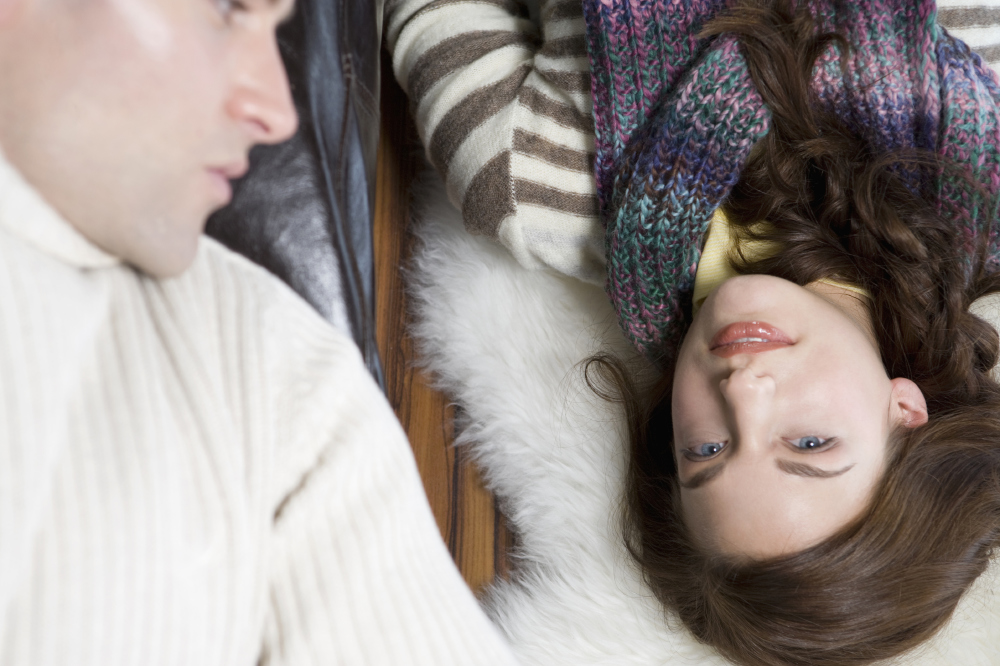SAD (Seasonal Affective Disorder) can be responsible for loss of interest in sex or physical contact and can cause social and relationship problems. A person with SAD is often more irritable and may not want to see their partner, be more difficult or even abuse towards their loved one. So we talk to Professor Ewan Gillon about what SAD is and how its effects can be reduced to make both the sufferer and their partner’s lives a little easier.

Is SAD affecting you and your partner?
What is SAD?
Seasonal Affective Disorder (SAD) is a form of depression that follows a seasonal pattern. Sufferers find that episodes of depression occur around the same time each year. It’s sometimes called ‘winter depression’ because the symptoms are more noticeable and often more severe from the start of autumn.
SAD is often associated with a lack of daylight affecting the production of the hormone serotonin, also known as the ‘happy hormone’ which regulates appetite and sleep. There are other factors, too. Winter can bring with it a different kind of lifestyle that may be less enjoyable and more isolating. It may also be associated with negative feelings or experiences from the past.
Why can it be overlooked when being compared to other types of depression?
Similar to other forms of depression, people affected by SAD suffer from low mood, low self-esteem and a general disinterest in life. One of the main differences between SAD and other forms of depression is the seasonal occurrence of symptoms. Many SAD sufferers also find that they sleep more and eat more, which sets SAD apart from other forms of depression.
Why with big celebrations like Christmas around the corner can people still feel down this time of year?
SAD is associated with a lack of daylight, and most of those affected start feeling depressed around late October when days become shorter and nights are starting to draw in. Big events like Christmas may provide a helpful distraction. However, for some, the pressure of creating the ‘perfect’ Christmas - including presents, family meals and more – brings on stress and can make things worse rather than better.
What can happen in its most severe form?
Most people are affected a little by winter, finding they want to eat a bit more and sleep a little longer. You may be suffering from SAD if your symptoms start interfering with your daily life more seriously.
Sufferers find they are lethargic, especially in the morning and simply can’t get going. A general feeling of low mood continues throughout the day and people lose interest in their usual activities, including exercise, which can make symptoms of depression worse. Eating more than usual may lead to weight gain. Many sufferers also lose interest in their sex life and need much more sleep than normal.
What can be done to help?
Many people find that changing their habits helps, such as going for a walk in the sun at lunchtime and carrying on with regular exercise.
Talking therapies, such as cognitive-behaviour therapy, have been shown to be effective in addressing symptoms of depression by encouraging changes in thinking and behaviour patterns. Medication can also be useful.
Is there a role for light therapy?
Light therapy can help by making up for the shortage of daylight in winter and simulating sunlight. This encourages the body to produce more serotonin. Whilst research into light therapy is still continuing, findings suggest that it is effective in reducing the severity of symptoms, especially when used first thing in the morning.
Light therapy is provided by specialist lightboxes which glow like sunlight but without harmful ultraviolet rays. The light provided is usually at least ten times brighter than light produced by a regular light bulb.
So-called dawn simulators, timed bedside lights, are thought to make waking up easier by mimicking a sunrise. They come on dimly about an hour before your alarm goes off and gradually get brighter, helping you wake up gradually.
tagged in depression
